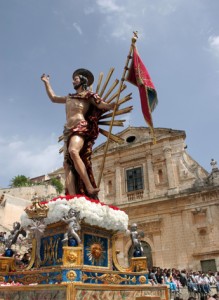Scicli
Scicli is 24 kilometers from Ragusa. Its municipal territory extends from the sea to the southern offshoots of the Hyblaean Table. The landscapes are very varied: you pass by the coast (alternating the low and sandy one with modest limestone cliffs) covered by the Mediterranean scrub to the gentle alluvial slopes of the hinterland with olive trees, almond and carob trees up to the limestone reliefs of the northern and internal part where the capital is located. The municipal area is crossed by several waterways which are all torrential and almost seasonal, except for the’ Irminio; the other main streams intercept the center of Scicli and are the Mothucanus or the Modica-Scicli stream, the stream of S. Maria La Nova and that of S. Bartolomeo. Over the millennia each of these has dug deep gorges in the plateau that today characterize the landscape. The modern city lies in the basin where these three canyons converge.
Scicli is an elegant town that extends into a wide valley between picturesque limestone cliffs that seem to frame it. Its churches and monuments give life to a precious jewel of art that blends harmoniously with natural beauties.
A time of Arab rule (864), then passed in Norman hand as the Sanctuary of the Madonna delle Milizie remembers at approx 1,5 km away from Scicli, towards the coast.
 The visit of the small center can start from piazza Italia where, in addition to the beautiful eighteenth-century buildings stands the Mother Church of the Madonna delle Milizie, in baroque style, rich in gilded stuccoes and frescoes. To underline the Madonna delle Milizie, a papier-mâché work representing the fight against the Saracens.
The visit of the small center can start from piazza Italia where, in addition to the beautiful eighteenth-century buildings stands the Mother Church of the Madonna delle Milizie, in baroque style, rich in gilded stuccoes and frescoes. To underline the Madonna delle Milizie, a papier-mâché work representing the fight against the Saracens.
 Pthen we come to the Church of San Bartolomeo of the fifteenth century, whose interior allows us to admire a wooden nativity scene from 1573 but renewed at a later time.
Pthen we come to the Church of San Bartolomeo of the fifteenth century, whose interior allows us to admire a wooden nativity scene from 1573 but renewed at a later time.
Palazzo Beneventano appears to be one of the most significant Baroque monuments in the whole of Ragusa.
Dto remember are also the monastic complex of the Carmelites, from 1386, and the Church of Santa Maria La Nova in neoclassical style but dating back to the 15th century.
AOther churches are those of San Matteo, very suggestive, and of the Cross.
The Symbol of the City : The Risen Christ “In Joy”


